If you came here to learn wrestling strength training like Triple H and John Cena or how to jump higher off the top rope, you’ve found the wrong wrestling. If we were to refer to South Park, this is strength training for real wrasslin’!
Wrestling likely benefits the most from physicality compared to other forms of martial arts. In fact, an old study concluded that physiological variables (such as strength) are the best way to predict success in elite-level wrestlers [1].
Maximal dynamic and isometric strength are strong predictors of wrestling performance. Elite-level wrestlers possess greater strength than their sub-elite counterparts across all weight classes.
To gain the most accurate understanding of how important strength training is for wrestling, we must compare elite and non-elite wrestlers' strength and power capabilities. If elite wrestlers are stronger in certain areas, we can confidently conclude that they are important for high-level wrestling performance.
Wrestler Strength Training Benefits
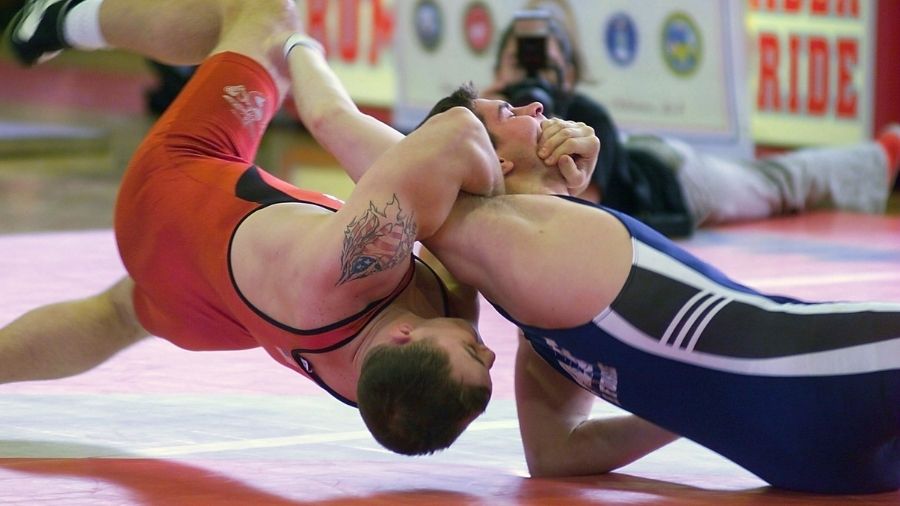
Strength training is an essential component of preparing for wrestling, a sport that demands technical skill and a high degree of physical strength, power, speed, and endurance. Here’s why you should strength train for wrestling.
Strength Training Reduces Injury Risk
There is a host of evidence supporting that stronger athletes are more resistant to injury. For example, one meta-analysis found strength training reduces sports injuries to less than a third and reduces overuse injuries by 50% [17].
Further, a 10% increase in strength training volume reduces the risk of injury by more than 4% [18]. Safe to say, hitting the gym can keep you on the mats longer.
Be Able To Train Harder
While being stronger will keep you on the mats longer without injury, it also makes you a more robust wrestler. Stronger wrestlers can handle workloads with less risk of injury and tolerate larger week-to-week changes in training load [19].
A spike in training load is often associated with injury. Meaning if you go from little training to suddenly hours of intense training, being stronger will make you more resilient and able to bounce back faster.
Strength Exercises Increase Strength & Power
Wrestling is a sport of strength and power. Strength is a strong predictor of wrestling performance [1].
A well-programmed strength training routine (like in our 12-week off-season wrestling strength & conditioning program) will enhance strength and power without making you slow or “muscle bound.”
Since power is the product of force and velocity, lifting weights targets the force side of the power equation.
Lifting Weights Can Make You A Faster Wrestler
Speed kills in all sports. Wrestling included. Strength is one of the backbones of speed and, when performed correctly, enhances speed alongside strength. If you want to blast double legs easily, get in the gym.
Develop Specific Wrestling Strength
Weight training is typically general preparation for wrestling. However, you can perform exercises closer to representing wrestling movements.
One example is sandbag bearhug carries, which mimics the postures and muscles worked when lifting an opponent.
Another option is the Zercher squat, forcing you to support the weight with your arms and shoulders and maintain an upright posture.
Gain A Mental Edge
Knowing you have the strength to lift hefty poundages and having muscles to show for it is a confidence booster. Having this mindset going into a match can make or break your competition's success.
While exercise isn’t the ideal way to develop mental toughness, having this confidence may give you the extra push during a competitive wrestling match.
Best Strength Exercises For Wrestling
Squat
The squat is considered the king of lower body exercises. It targets the glutes and quads but is limited by your back strength. You have many variations to play with, such as back squats, front squats, and even zercher squats.
What you use depends on your injury history, stage of training, and what you feel most comfortable performing. I’m a big fan of the front squat, and here is how to do it:
Deadlift
The deadlift is another lower body dominant staple exercise within wrestling workouts. It targets the glutes, hamstrings, quads, and back. You’ll also strengthen your grip, which is a bonus. I’m not a huge fan of programming it because heavy deadlifts are hard to recover from, making it tough to wrestle later.
Further, many wrestlers suffer from lower back pain, and deadlifting can make this worse. However, some wrestlers love the deadlift exercise and, when programmed properly, can be a great addition to your workout.
However, I recommend choosing the trap bar over the barbell variation as it reduces lower back stress, and the elevated handles reduce the range of motion. Here’s how to do it:
Power Clean
I’m a big proponent of Olympic Weightlifting movements for wrestlers. It doesn’t need to be the classical snatch and clean & jerk. Weightlifting derivatives are easier to learn and maximize strength and power development without mastering the technique.
Moving heavy loads quickly is the name of the game for maximizing the transfer between resistance exercise and wrestling training. Here’s how to do it:
Jump Squat
Jumping is an excellent alternative to the Weightlifting movements. It has no learning curve, and you can express power with varying loads. You can use a barbell on your back or hold a trap bar or dumbbell by your side.
Jumping improves your ability to produce force quickly, which is a key requisite for wrestling performance. Here’s how to do it:
Snatch High Pull
The snatch high pull is my go-to weight training exercise for building a powerful upper back. You must sequence the pull from the floor, then use your hips and upper back muscles to propel the barbell toward your chest.
It’s the ultimate full-body strength exercise for wrestlers and closely mimics the mat return movement like the power clean. Here’s how to do it:
Weighted Pull-Up
Pull-ups should be a staple within your wrestling workouts. For variation, they can be done with an underhand (chin-up) or overhand (pull-up) grip. You can level them up further by using towels to strengthen your grip. Here’s how to do it:
Barbell Row
The barbell row is an epic strength exercise as it puts you in a bent-over position where you must support your body weight and the barbell. Honestly, I hate doing this exercise. But the exercises you hate give you the most significant gains.
If you don’t want to use the barbell, the dumbbell row is a great substitute when done heavy. Here’s how to barbell row:
Push Press
The push press is another Weightlifting derivative that must be in a wrestler's weight training program. You must sequence the force generated from your legs to your hands and arms like many takedowns. Here’s how to do it:
Sandbag Loading
Sandbag loading is the more specific version of the Weightlifting derivatives regarding wrestling training. Within the power clean, the hips and knees aren’t thrust forward as that kicks the bar horizontally. But this is ideal when loading a sandbag.
It gets you into a similar position to performing a mat return and carrying your opponent on your hips. The awkward sandbag makes it even better. Here’s how to do it:
Sandbag Bearhug Carry
Like sandbag loading, the bearhug carry is a brutal Strongman exercise challenging your entire body from your hips to your hands. You can make incredible endurance improvements with this exercise when done consistently. Here’s how to do it:
Farmers Walk
Of course, no wrestling exercise list is complete without the farmers walk. It taxes the grip and upper back like no other exercise. Farmers' handles are typically best, but kettlebells also make a good option. Here’s how to do it:
Strength Profile Of Elite vs. Non-Elite Wrestlers
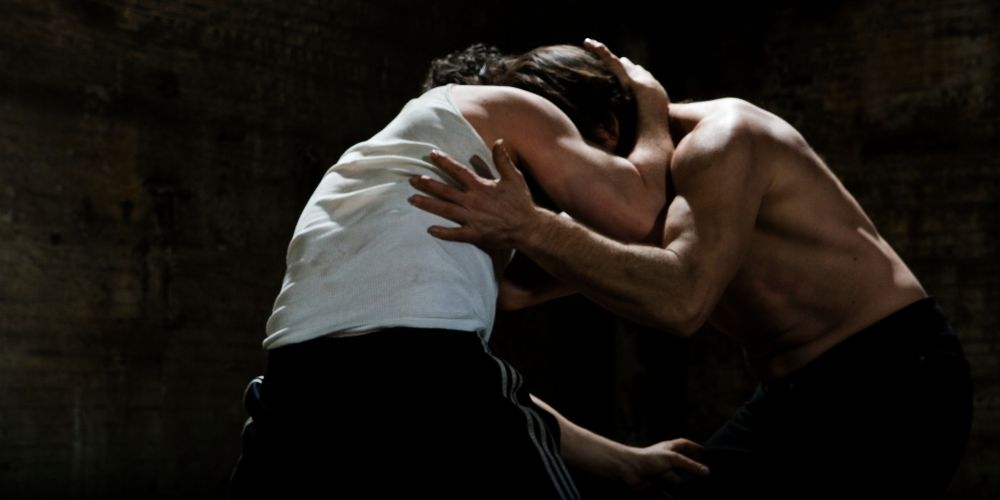
Maximal dynamic and isometric strength has been well-researched within the wrestling community. Rightly so, wrestling requires picking up and moving other humans of similar size. Maximal strength in wrestling exceeds values seen in the striking arts but is comparable to other grappling arts, such as judo [2]. Highlighting the different physical requirements needed for these martial arts.
126 male wrestlers were categorized as top elite, elite, and amateur wrestlers [3]. The top elite won medals at European and/or World Championships. Elite wrestlers participated in these events but didn’t win a medal, and amateurs did not compete.
The researchers found no differences between levels regarding isometric grip strength, back strength, or leg strength, regardless of weight class. However, lower body average and peak power during maximal cycling sprint tests were greater in elite than amateurs.
These differences were not seen between the top elite and the elite, indicating that once a certain level of physical ability is reached, the technical and tactical ability separates the very top wrestlers.
It's important to note that amateurs in this study had less training experience than elite wrestlers, potentially explaining the reduced physical capacity.
But we can’t draw conclusions from one study!
Let's examine a case study involving the Iranian 4x World senior Greco-Roman wrestling champion in the 55 kg weight class [4]. This wrestler completed 30% more pull-ups and 8% more sit-ups than the National norms, highlighting his enhanced muscular endurance qualities.
He was also stronger in the back squat compared to National norms relative to body weight (1.83 vs. 1.79 respectively). However, his bench press was lower at 1.39 vs. 1.48 relative to bodyweight.
Similar strength levels were found in elite Iranian Junior wrestlers in the 55 kg weight class, with an average of 1.9 and 1.4 squat and bench press relative to body weight [5].
In fact, strength relative to body weight was not too different between weight classes, with a general trend of relative strength decreasing as weight classes increased due to the increase in the absolute load of the exercise.
If we compare these numbers to Division III American College wrestlers, the elite Iranian Junior wrestlers showed higher squat and bench press numbers, which potentially indicates that higher-level wrestlers are stronger [6].
Furthermore, research on elite Junior Turkish wrestlers compared strength measurements between those selected for the National Team for the World Championships and those not [7].
While they didn’t measure the traditional dynamic lifts such as the squat and bench press, they measured isometric grip, back, and leg strength.
Selected wrestlers were found to have 10% greater grip strength, 12% greater isometric back strength, and 7% greater isometric leg strength compared to those who weren’t selected for the National training camp.
Looking again at senior wrestlers, a 2015 study compared elite and sub-elite wrestlers where elite wrestlers were those with 8+ years of experience and participated in at least three International events representing their country, while sub-elite wrestlers were finalists in their National competitions but never competed internationally [8].
Elite wrestlers had higher bench presses (1.1 vs. 0.9) and squats (1.4 vs. 1.1) relative to bodyweight than sub-elite wrestlers.
Adding to this body of evidence is a 2011 study that set out to find which physical factors predict wrestling performance by comparing elite and amateur wrestlers by bodyweight (lightweight, middleweight, and heavyweight) [9]. Elite wrestlers had more fat-free mass and 12-26% greater squat and bench press than amateurs.
Maximum muscle power was also much higher for these exercises, ranging from 14-30% greater than seen in amateur wrestlers. It seemed that age and physical training experience wasn’t the distinguishing factor regarding muscle strength and power, but rather fat-free mass.
The load that maximized power in the squat was approximately 60-65% 1RM, and the bench press was approximately 34-37% 1RM regardless of weight class, providing some essential, actionable information to inform strength programming.
Elite wrestlers also showed stronger grip strength in the light and middleweight classes, ranging from 6-19% greater, but no differences were seen in heavyweights. Maximal back strength was also much higher in elites than amateurs at 7-20%.
Overall, we can conclude that dynamic and isometric physical strength is important to wrestling success and should be prioritized within a wrestler's training program.
Physical Differences Between Greco-Roman and Freestyle Wrestling
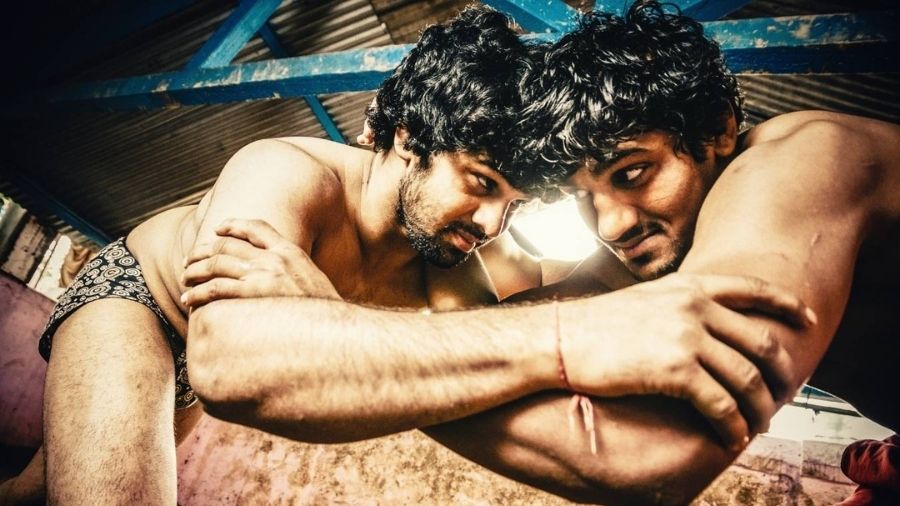
Both Freestyle and Greco-Roman wrestling are Olympic sports. Freestyle wrestling is characterized by the use of explosive techniques over a 2 x 3-minute bout. The main distinction is the ability to use upper and lower body wrestling while Greco-Roman only allows upper body techniques [10]. Do these differences influence the physical profiles of elite wrestlers?
Junior Greco-Roman and Freestyle wrestlers of the Polish National team were compared through a range of physical tests [11]. Freestyle wrestlers showed greater strength endurance of the trunk (sit-ups and side twists) and the upper body (pull-ups and dips).
This may be explained by the number of techniques that can be used to end a match by either using the arms or legs such as various leg locks making it attack-oriented wrestling.
Freestyle wrestlers also possessed stronger bench presses, snatches, and higher vertical jumps than Greco-Roman wrestlers.
A more recent study on junior Turkish wrestlers found slightly different results where no differences were found in strength (grip and back) between wrestling styles except for isometric leg strength being higher in Greco-Roman wrestlers [10].
Perhaps the differences found in these studies could come down to the testing modalities used with the former using dynamic strength endurance tests where the latter used isometric tests. As both wrestling styles require high-levels of isometric strength, perhaps these values won’t differ to the same extent as dynamic movement when freestyle wrestling is considered a more explosive style.
How Wrestling Tournaments Affect Strength
Understanding how a wrestling tournament may impact strength as matches’ progress may provide some valuable insight into strength training preparation. So one study followed Division I freestyle wrestlers who were National and International competitors over a 2-day simulated tournament after a weight cut [12].
Day 1 had 3, 5 minutes matches while Day 2 had 2 matches. As we know, there can be some differences between sparring and competitive matches so to make the environment more competitive, wrestlers were competing for a starting position within their weight class.
Both handgrip and bear hug strength declined from the first match compared to baseline over the 2 days. Vertical jump only declined at the start of Day 2 likely due to the increased concentrations of the muscle damage marker creatine kinase.
Further, reductions in slower velocity and isometric elbow and knee strength were observed throughout the tournament showing slower, maximal strength movements to be more susceptible to fatigue compared to faster velocity movements.
It may be pertinent to emphasize isometric, maximal strength, and strength endurance over higher-velocity strength training due to the high levels of fatigue present in tournaments as well as strength being a major predictor of wrestling success.
Injury Profile Of Wrestling
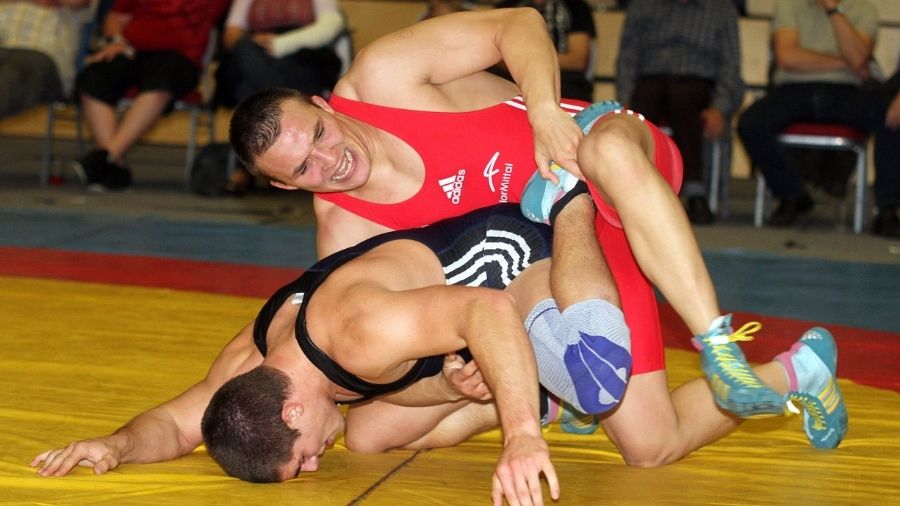
Starting at the American high school level, the most commonly injured areas were the shoulder (24%) and knee (17%) [13]. Shoulder injuries were mainly rotator cuff muscle strains and knee injuries mainly contusions and meniscus tears. Ankles were the most common joint sprain.
Another study investigating high school and collegiate wrestling found half of the injuries were strains and sprains [14]. Knee (25% & 15%) and shoulder (18% & 18%) injuries were the most common in collegiate and high school wrestlers respectively.
When looking at the Olympic level, the 2008 Beijing Olympics showed freestyle wrestling had the highest injury rates [15]. Most injuries were cuts (60%) and sprains (25%) with the upper body having more injuries than the lower body.
The 2016 Rio Olympics showed similar findings with the most common injury being cuts and contusions (55%) but with both freestyle and Greco-Roman sustaining high injury rates (36% & 41% respectively) [16].
We can conclude that strengthening the shoulder, knee, and ankles should remain a strong focus throughout a strength training plan for wrestling.
Wrestling Strength Training Program
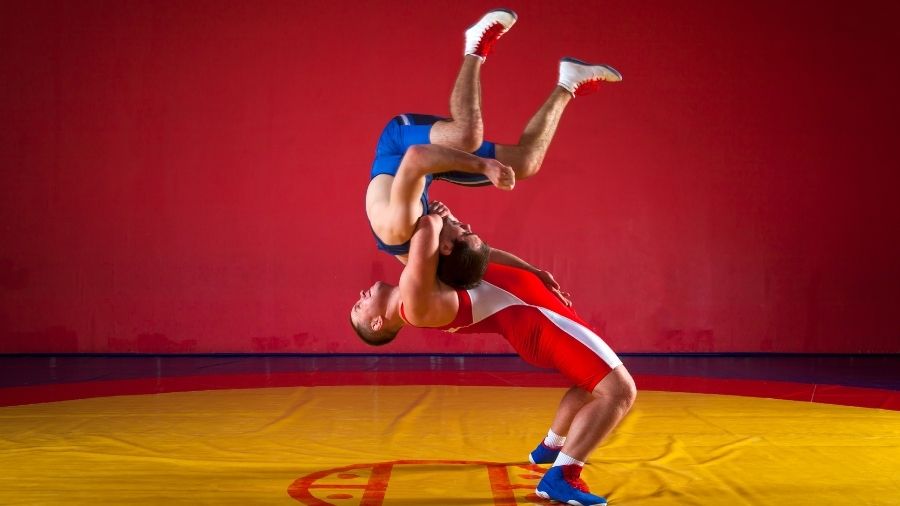
While there are potentially small differences between freestyle and Greco-Roman, this will be an example of wrestling workouts. Strength training for wrestlers is more than a basic Powerlifting routine.
There are other attributes that must be addressed within the program.
I’ve set this up in two phases, as I've done with the other strength training programs on Sweet Science of Fighting. Phase 1 will focus on developing maximal dynamic strength and sub-maximal isometric strength.
Phase 2 will continue to focus on maximal dynamic strength and maximal isometric strength. However, with some more advanced set/rep protocols. One is using cluster sets to maintain high-quality volume and potentially minimize some of the fatigue from the sets.
Reducing some of the fatigue is essential as a high volume power training (HVPT) approach is taken with the jump squat and bench throw made popular by Alex Natera.
HVPT improves maximal jump performance and the ability to repeat power, which is potentially beneficial for the explosive nature of freestyle wrestling.
I broke down this training protocol in my video below:
This program will focus on a 3-day-a-week model as strength training is more important to wrestling than other martial arts. They may train 3-4 times a week for their sport at least at the collegiate level and even less if it is the off-season. This program will have an off-season focus.
Wrestling Strength Workouts Phase 1
Day 1
Exercise | Set/Rep | Load |
|---|---|---|
Robustness Circuit | Cell | Cell |
A1) Mini Band Spider Crawl | 2-3 x 3 up and down wall | Cell |
A2) Ankle Pop (Pogo) | 2-3 x 20 | Cell |
A3) KB Waiter Walk | 2-3 x 20m/side | Cell |
A4) Cossack Squat | 2-3 x 5-10/side | Cell |
A5) Half Kneeling Pallof Press | 2-3 x 10/side | Cell |
Main Work | Cell | Cell |
B1) Power Snatch High Blocks | 3 x 3 | Cell |
C1) Back Squat | 3-4 x 5-6 | 70-80% 1RM |
C2) 4-Way Band Isometric Neck | 3-4 x 10-15sec | Cell |
D1) Fat Bar Bench Press | 3-4 x 5-6 | 70-80% 1RM |
D2) 1-Arm DB Row | 3-4 x 8-12 | Cell |
E1) Landmine Rotation | 3 x 5/side | Cell |
E2) Sandbag Bearhug | 3 x 30-60 sec | Cell |
Day 2
Exercise | Set/Rep | Load |
|---|---|---|
Robustness Circuit | Cell | Cell |
A1) Mini Band Spider Crawl | 2-3 x 3 up and down wall | Cell |
A2) Ankle Pop (Pogo) | 2-3 x 20 | Cell |
A3) KB Waiter Walk | 2-3 x 20m/side | Cell |
A4) Cossack Squat | 2-3 x 5-10/side | Cell |
A5) Half Kneeling Pallof Press | 2-3 x 10/side | Cell |
Main Work | Cell | Cell |
B1) Medicine Ball Scoop Toss | 3 x 3 | 5-8 kg |
C1) Romanian Deadlift | 3-4 x 5-6 | 70-80% 1RM |
C2) Neck Flex/Ext | 3-4 x 10-20 | Cell |
D1) Fat Bar Press | 3-4 x 5-6 | 70-80% 1RM |
D2) Chin-Up | 3-4 x 5-10 | Cell |
E1) Fat Bar Curl | 3-4 x 8-12 | Cell |
E2) Tricep Extension | 3-4 x 8-12 | Cell |
Day 3
Exercise | Set/Rep | Load |
|---|---|---|
Robustness Circuit | Cell | Cell |
A1) Mini Band Spider Crawl | 2-3 x 3 up and down wall | Cell |
A2) Ankle Pop (Pogo) | 2-3 x 20 | Cell |
A3) KB Waiter Walk | 2-3 x 20m/side | Cell |
A4) Cossack Squat | 2-3 x 5-10/side | Cell |
A5) Half Kneeling Pallof Press | 2-3 x 10/side | Cell |
Main Work | Cell | Cell |
B1) Power Clean High Blocks | 3 x 2-3 | Cell |
C1) Bulgarian Split Squat | 3-4 x 6-10/leg | 8 RPE |
C2) Neck Lateral Flexion | 3-4 x 10-20/side | Cell |
D1) DB Incline Bench | 3-4 x 8-10 | 8 RPE |
D2) Fat Bar Row | 3-4 x 5-6 | Cell |
E1) Isometric Back Extension | 3 x 20-60 sec | Cell |
E2) Hanging Leg Raise | 3 x 10-15 | Cell |
Phase 2
Day 1
Exercise | Set/Rep | Load |
|---|---|---|
Robustness Circuit | Cell | Cell |
A1) Bear Crawl | 2-3 x 10-15m | Cell |
A2) Single Leg Extensive Lateral Line Hop | 2-3 x 20 | Cell |
A3) Backwards Sled Drag | 2-3 x 20m | Cell |
A4) Band Shoulder Dislocate | 2-3 x 10 | Cell |
A5) Band Pull Apart | 2-3 x 15-20 | Cell |
Main Work | Cell | Cell |
B1) Power Snatch High Blocks | 3 x 2-3 | Cell |
C1) Back Squat Cluster | 3-4 x 2+2+2 | 70-85% 1RM |
C2) 4-Way Maximal Isometric Neck | 3-4 x 6-10sec | Cell |
D1) Fat Bar Bench Press Cluster | 3-4 x 2+2+2 | 70-85% 1RM |
D2) 1-Arm DB Row | 3-4 x 6-10 | Cell |
E1) Zercher Staggered Stance RDL | 3-4 x 5-6 | Cell |
F1) Sandbag Bearhug Carry | 3 x 20m | Cell |
Day 2
Exercise | Set/Rep | Load |
|---|---|---|
Robustness Circuit | Cell | Cell |
A1) Bear Crawl | 2-3 x 10-15m | Cell |
A2) Single Leg Extensive Lateral Line Hop | 2-3 x 20 | Cell |
A3) Backwards Sled Drag | 2-3 x 20m | Cell |
A4) Band Shoulder Dislocate | 2-3 x 10 | Cell |
A5) Band Pull Apart | 2-3 x 15-20 | Cell |
Main Work | Cell | Cell |
B1) Jump Squat | 6 x 5+5+5 w/ 5 sec rest (2min rest between sets) | 30-40% 1RM |
C1) Landmine Rotation | 3-4 x 5/side | Cell |
C2) Neck Harness | 3-4 x 10-20 | Cell |
D1) Fat Bar Press | 5 x 5/4/3/2/1 | Cell |
D2) Weighted Chin-Up | 3-4 x 5-10 | Cell |
E1) Fat Bar Curl | 3-4 x 8-12 | Cell |
E2) Tricep Extension | 3-4 x 8-12 | Cell |
E3) Weighted Back Extension | 3-4 x 10-20 | Cell |
Day 3
Exercise | Set/Rep | Load |
|---|---|---|
Robustness Circuit | Cell | Cell |
A1) Bear Crawl | 2-3 x 10-15m | Cell |
A2) Single Leg Extensive Lateral Line Hop | 2-3 x 20 | Cell |
A3) Backwards Sled Drag | 2-3 x 20m | Cell |
A4) Band Shoulder Dislocate | 2-3 x 10 | Cell |
A5) Band Pull Apart | 2-3 x 15-20 | Cell |
Main Work | Cell | Cell |
B1) Hang Power Clean | 3 x 2-3 | Cell |
C1) Pistol Squat | 3-4 x 5-8/leg | Cell |
C2) Iron Neck Figure 8s | 3-4 x 10-20/side | Cell |
D1) Fat Bar Row | 3-4 x 5-6 | Cell |
E1) Bench Throw | 6 x 5+5+5 w/ 5 sec rest (2min rest between sets) | 30-40% 1RM |
F1) Suitcase Carry | 2-3 x 20m | Cell |
Become The Enforcer & Manhandle Opponents
12-Week Off-Season Wrestling Strength & Conditioning Program that will give you elite level strength & conditioning specifically for wrestling so you can dominate the mats.
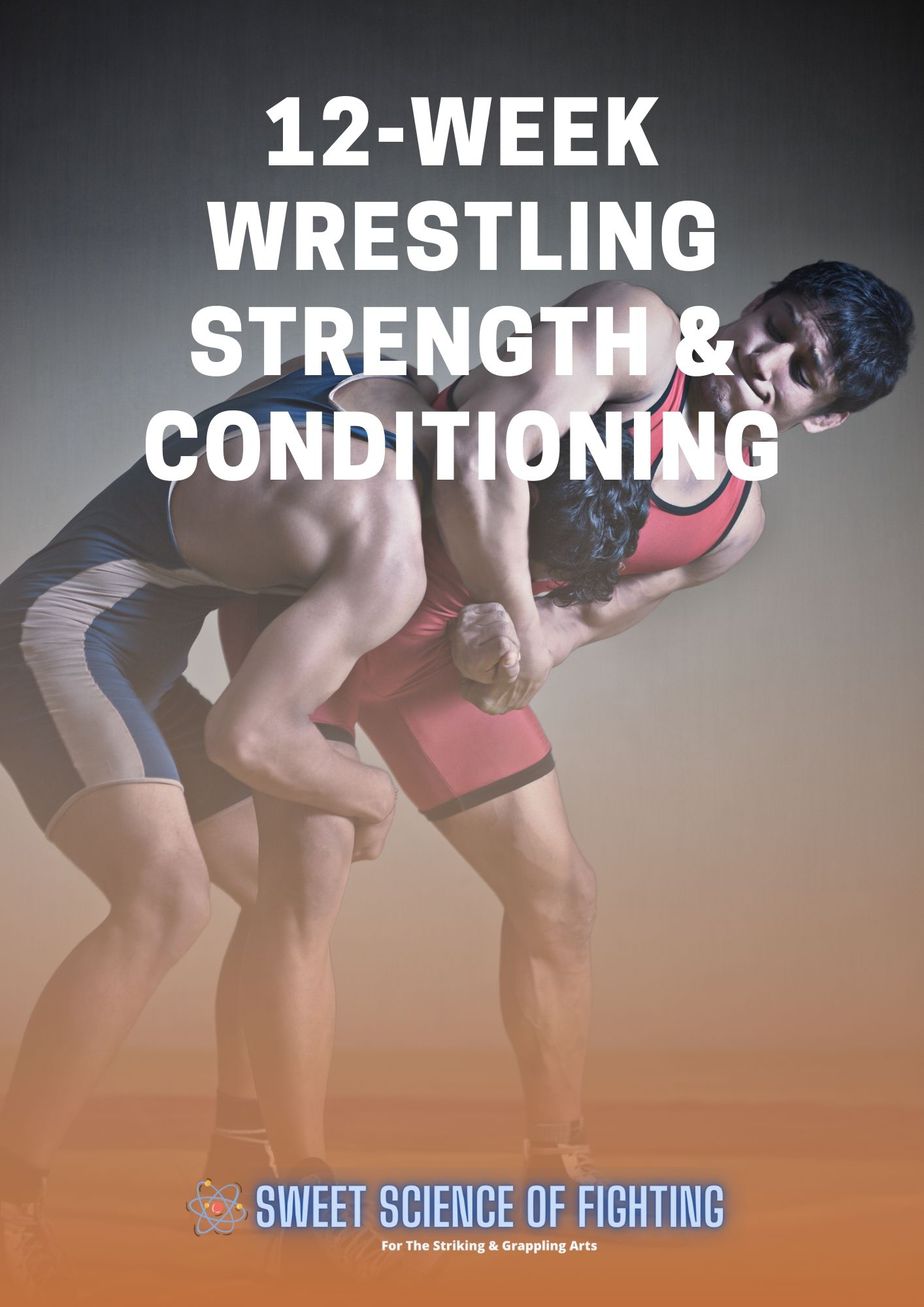

References
1. Nagle, F. J., Morgan, W. P., Hellickson, R. O., Serfass, R. C., & Alexander, J. F. (1975). Spotting success traits in Olympic contenders. The Physician and Sportsmedicine, 3(12), 31-34.
2. Chaabene, H., Negra, Y., Bouguezzi, R., Mkaouer, B., Franchini, E., Julio, U., & Hachana, Y. (2017). Physical and physiological attributes of wrestlers: an update. The Journal of Strength & Conditioning Research, 31(5), 1411-1442.
3. Demirkan, E., Koz, M., Kutlu, M., & Favre, M. (2015). Comparison of physical and physiological profiles in elite and amateur young wrestlers. The Journal of Strength & Conditioning Research, 29(7), 1876-1883.
4. Mirzaei, B., Curby, D. G., Barbas, I., & Lotfi, N. (2011). Anthropometric and physical fitness traits of four-time World Greco-Roman wrestling champion in relation to national norms: A case study.
5. Mirzaei, B., Curby, D. G., Rahmani-Nia, F., & Moghadasi, M. (2009). Physiological profile of elite Iranian junior freestyle wrestlers. The Journal of Strength & Conditioning Research, 23(8), 2339-2344.
6. Schmidt, W. D., Piencikowski, C. L., & Vandervest, R. E. (2005). Effects of a competitive wrestling season on body composition, strength, and power in National Collegiate Athletic Association Division III college wrestlers. Journal of Strength and Conditioning Research, 19(3), 505.
7. Demirkan, E., Ünver, R., Kutlu, M., & Mitat, K. O. Z. (2012). The comparison of physical and physiological characteristics of junior elite wrestlers. Beden Eğitimi ve Spor Bilimleri Dergisi, 6(2), 138-144.
8. Morán-Navarro, R., Valverde-Conesa, A., López-Gullón, J. M., la Cruz-Sánchez, D., & Pallarés, J. G. (2015). Can balance skills predict Olympic wrestling performance?. Journal of Sport & Health Research, 7(1).
9. García-Pallarés, J., López-Gullón, J. M., Muriel, X., Díaz, A., & Izquierdo, M. (2011). Physical fitness factors to predict male Olympic wrestling performance. European journal of applied physiology, 111(8), 1747-1758.
10. Demirkan, E., Kutlu, M., Koz, M., Özal, M., & Favre, M. (2014). Physical fitness differences between freestyle and Greco-Roman junior wrestlers. Journal of human kinetics, 41(1), 245-251.
11. Baić, M., Sertić, H., & Starosta, W. (2007). Differences in physical fitness levels between the classical and the free style wrestlers. Kinesiology: International journal of fundamental and applied kinesiology, 39(2), 142.
12. Kraemer, W. J., Fry, A. C., Rubin, M. R., Triplett-McBride, T., Gordon, S. E., Koziris, L. P., ... & Fleck, S. J. (2001). Physiological and performance responses to tournament wrestling. Medicine and science in sports and exercise, 33(8), 1367-1378.
13. Pasque, C. B., & Hewett, T. E. (2000). A prospective study of high school wrestling injuries. The American journal of sports medicine, 28(4), 509-515.
14. Yard, E. E., Collins, C. L., Dick, R. W., & Comstock, R. D. (2008). An epidemiologic comparison of high school and college wrestling injuries. The American journal of sports medicine, 36(1), 57-64.
15. Shadgan, B., Feldman, B. J., & Jafari, S. (2010). Wrestling injuries during the 2008 Beijing olympic games. The American journal of sports medicine, 38(9), 1870-1876.
16. Shadgan, B., Molnar, S., Sikmic, S., & Chahi, A. (2017). Wrestling injuries during the 2016 Rio Olympic games. British Journal of Sports Medicine, 51(4), 387-387.
17. Lauersen, J. B., Bertelsen, D. M., & Andersen, L. B. (2014). The effectiveness of exercise interventions to prevent sports injuries: a systematic review and meta-analysis of randomised controlled trials. British journal of sports medicine, 48(11), 871-877.
18. Lauersen, J. B., Andersen, T. E., & Andersen, L. B. (2018). Strength training as superior, dose-dependent and safe prevention of acute and overuse sports injuries: a systematic review, qualitative analysis and meta-analysis. British journal of sports medicine, 52(24), 1557-1563.
19. Malone, S., Hughes, B., Doran, D. A., Collins, K., & Gabbett, T. J. (2019). Can the workload–injury relationship be moderated by improved strength, speed and repeated-sprint qualities?. Journal of science and medicine in sport, 22(1), 29-34.

